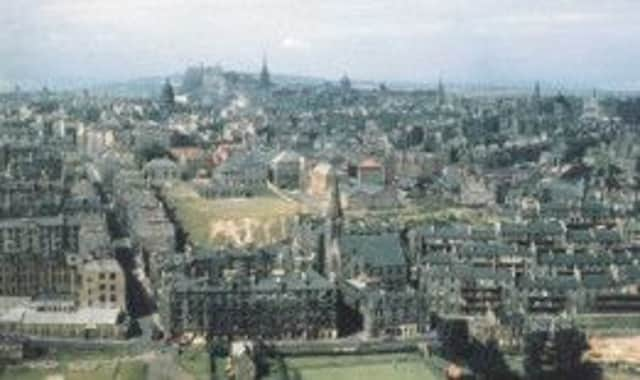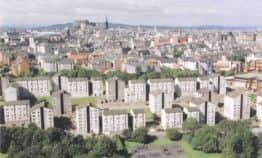Lost Edinburgh: The Dumbiedykes


The area took shape in the 18th century, as houses started to spring up around what we know today as the Pleasance. Industry slowly began to thrive too, with the establishment of many factories and breweries, such as Bells Brewery – knowingly located just outside the city walls in order to avoid hefty burgh taxes.
‘Dumbie House’
In 1764 a Lanarkshire-born teacher, Thomas Braidwood, founded a school for the deaf to the north-east of St Leonard Street. Formally known as ‘The Academy for the Deaf and Dumb’, the school was the first of its kind in Britain and Braidwood became famous for pioneering new methods of sign language. Following Braidwood’s relocation to England, the school closed, but the building’s nickname, ‘Dumbie House’, endured. From around 1820 onwards the road running past Dumbie House from St Leonard’s to the Canongate began to appear on maps as ‘Dumbie Dykes’ – the latter part of this name referring to the walls which bordered the King’s Park. Within a few short years Dumbiedykes would be used exclusively to describe the entire district. Braidwood’s Dumbie House was later renamed Craigside House, in reference to the nearby crags which towered over it. The house was demolished in 1939.


Population boom
Advertisement
Hide AdOver the course of the 19th century the Dumbiedykes underwent a population explosion as it began to receive migrants from rural areas and the overspill from Edinburgh’s overcrowded Old Town. Tenement after tenement – many of them hastily constructed – went up in order to accommodate Edinburgh’s growing working classes who could earn a wage in one of the many industries located nearby. Although hardly uncommon for the time, conditions within most of these tenements ranged from sub-standard to utterly dreadful. Several families would often occupy a single flat with a shared outside toilet being the norm. Rat infestations and outbreaks of dysentery were a part of daily life. The Dumbiedykes was a severely poverty-stricken enclave of central Edinburgh, and so it continued well on into the 20th century.
Calls for redevelopment
In the 1930s the ward of St Leonard’s and Dumbiedykes was considered among the very poorest in the city, and the corporation was intent on solving this problem by removing small pockets of its dilapidated housing stock. It looked as if a full-scale revamp was just around the corner; however, the outbreak of WWII would force the issue to one side for another generation.
In the 1950s, the streets in the St Leonard’s/Dumbiedykes area were finally considered for redevelopment. Beaumont Place included the ‘Penny Tenement’ whose owner tried to sell it for a penny in 1953 to demonstrate the burden on landlords caused by rent controls. No one came forward with a penny and it was offered free to the council, who also declined. On November 21st 1958 at 5am, part of the building collapsed, fortunately with no fatalities, but the tenement had to be evacuated, and temporary accommodation provided for the 18 families left without a fixed abode.
The collapse of the Penny Tenement caused considerable reverberations, to the extent of questions being asked in Parliament about the adequacy of existing legislation relating to slum clearance. The incident received wide publicity which included a Panorama programme, in which a young girl talked about the mice that ran over her feet in her bed.
It focused attention on Edinburgh’s slums and was an event that those calling for renewal had been waiting for. In December 1959, Edinburgh councillors made a tour of inspection of the slums in the St Leonard’s ward to view the problems first-hand. Two extensive clearance areas around Carnegie Street were declared shortly afterwards and a hundred families were immediately moved from dangerous homes and re-housed - the beginning of a major slum-clearance drive. In the early 1960s, 1,030 houses were demolished in the St. Leonard’s and Dumdiedykes area and an estimated 1,977 people displaced. Slum clearance was also the impetus for major redevelopment in Newhaven, Greenside, Leith and parts of the Old Town.
By the 1970s the Dumbiedykes of old was all but wiped from the map, with stone and slate switched for concrete and steel. Sadly, a centuries-old community was displaced in the process.
Advertisement
Hide AdToday the area consists of approximately 650 homes including two high rise tower blocks: Holyrood Court and Lochview Court. Thanks to the spectacular views of Edinburgh to the east and west, they happen to be two of the most sought-after tower blocks in Scotland.
• David McLean is the founder of the Lost Edinburgh Facebook page